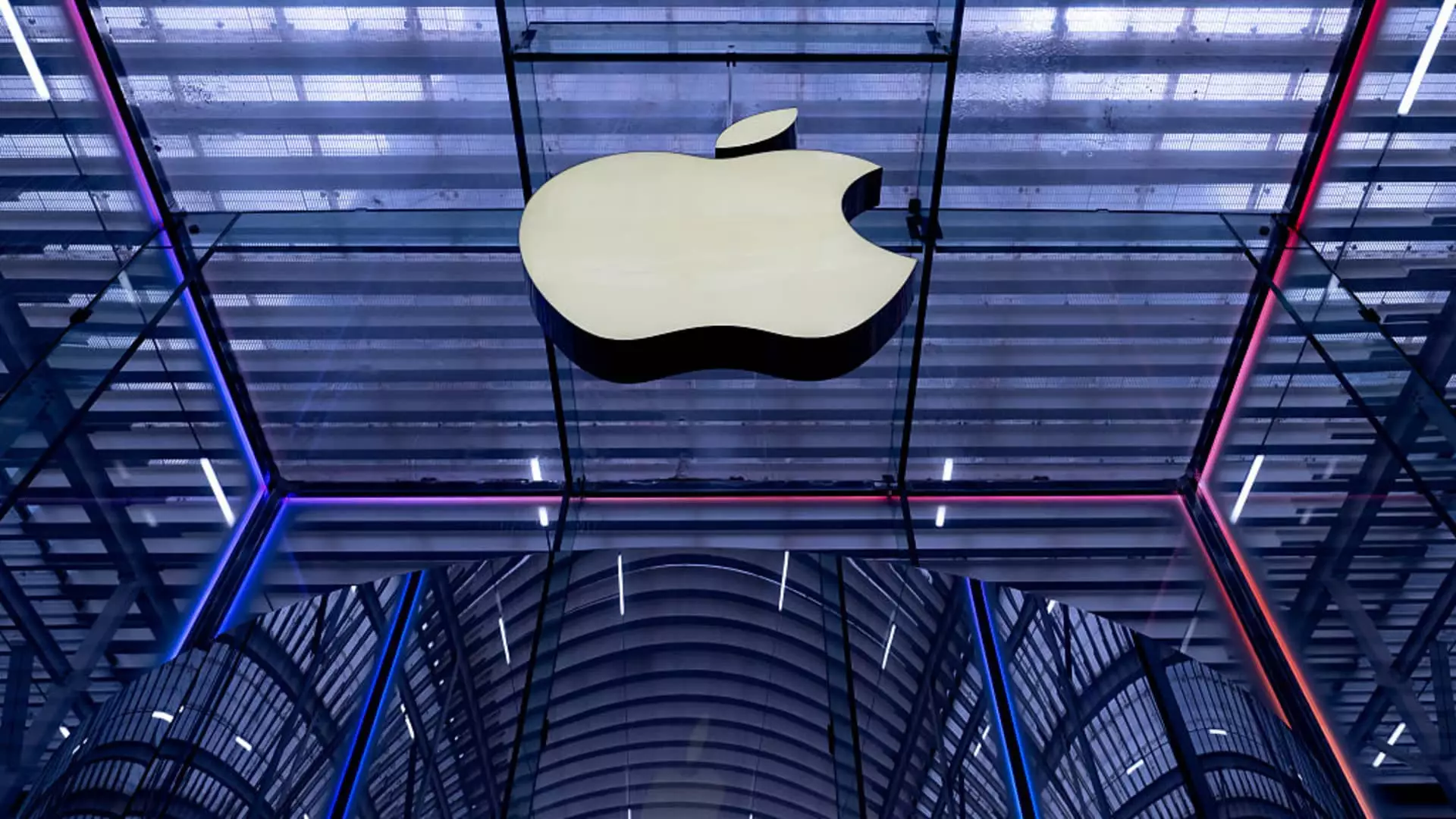In the shadows of Wall Street’s relentless pursuit of profit, a deeper crisis looms over Apple’s upcoming earnings report. While investors are fixated on short-term numbers, the underlying geopolitical turbulence and economic uncertainties threaten to reshape the tech titan’s trajectory. Prediction markets like Kalshi reveal a startling consensus: discussions around China, tariffs, and severance are imminent, signaling deeper issues than surface-level earnings can capture. These indicators are not mere speculation—they are harbingers of a fragile global supply chain and economic environment that’s increasingly hostile to American technological ambitions.
Much of the market’s anxiety is rooted in the ongoing tug-of-war with China. Apple’s reliance on Chinese manufacturing has historically fueled its success; however, rising geopolitical tensions and tariffs threaten this delicate dependency. The recent pivot to India and Vietnam, although commendable, is a costly and imperfect workaround. It signifies a reactive strategy rather than a proactive solution. Such supply chain disruptions not only threaten production stability but also undermine Apple’s pricing power, risking a future where the costliness of domestically manufactured iPhones skyrockets—potentially pricing out many consumers and chilling innovation.
Geopolitical Chokeholds and Economic Uncertainty
America’s trade policies, especially under the shadow of tariffs, wield significant influence over the tech giant’s bottom line. President Trump’s tariffs, threatening 25% or higher on non-U.S. manufactured iPhones, cast a long shadow over Apple’s profitability. While initiatives like the Detroit manufacturing academy offer glimmers of hope, they are too little, too late. Such efforts are band-aids on a bleeding wound created by systemic geopolitical strife—not sustainable solutions.
The shift of production from China to India and Vietnam is emblematic of an uneasy strategic realignment. While it has led to India surpassing China in smartphone exports, this transition introduces new vulnerabilities. Supply chain diversification is crucial but also costly and fraught with logistical challenges. Additionally, the risk of increased price points—potentially up to $3,500 per device—presents a threat to consumer demand, especially as global inflation and macroeconomic headwinds bite into discretionary spending.
Internal Challenges and Market Realities
Apple’s struggles extend beyond geopolitical strife. Internally, the company faces a stagnation dilemma—lacking groundbreaking innovations and strong product momentum. Barclays analyst Tim Long’s bleak forecast signals trouble: with market share shrinking in China and no revolutionary features in the pipeline, Apple’s once-unassailable growth is under threat. The reliance on “market share gains in China,” a key revenue driver historically, is diminishing, and the company’s US sales might soon be dominated by devices originating from India and Vietnam, not California.
This scenario paints a sobering picture: a global tech giant vulnerable not only to external shocks but also to internal stagnation. Price hikes might temporarily compensate for rising costs, but they could alienate customers in increasingly competitive markets. Apple’s inability to innovate aggressively enough to justify higher prices could erode its premium status, ultimately costing shareholders dearly.
The Illusion of Entertainment and Stock Performance
While Wall Street frets over tariffs and supply chains, Apple’s media ventures like “Severance” and its blockbuster F1 movie underscore the company’s attempt to diversify its revenue streams. Yet, such entertainment pursuits, while lucrative, serve as distractions from the core issues threatening its financial stability.
Stock performance tells a stark story: near-flat year-to-date returns and a 17% decline reveal markets’ growing skepticism about Apple’s near-term prospects. The disconnect between its entertainment successes and declining financial metrics indicates that investor confidence is waning. Expecting only modest earnings growth this quarter suggests that even the market’s optimism is fading amid mounting risks.
A Reckoning on the Horizon
Ultimately, Apple’s future hinges on how effectively it navigates the intersecting threats of global geopolitics, economic slowdowns, and innovation gaps. While the company attempts to adapt through diversification and strategic realignment, these measures are merely stopgaps. The larger risk remains: a world where U.S.-based tech giants are increasingly vulnerable to the shifting sands of international politics and economic realities.
The looming earnings call promises to reveal more than just financial figures; it exposes the fragile fortress of a company caught between a rock and a hard place. Unless Apple redefines its resilience and reinvigorates its innovation pipeline, it faces a future where its iconic products may become symbols of obsolescence rather than pioneering excellence. The question remains: how long can Apple ride the wave of past glory before the tide of global uncertainty swells and engulfs it?

